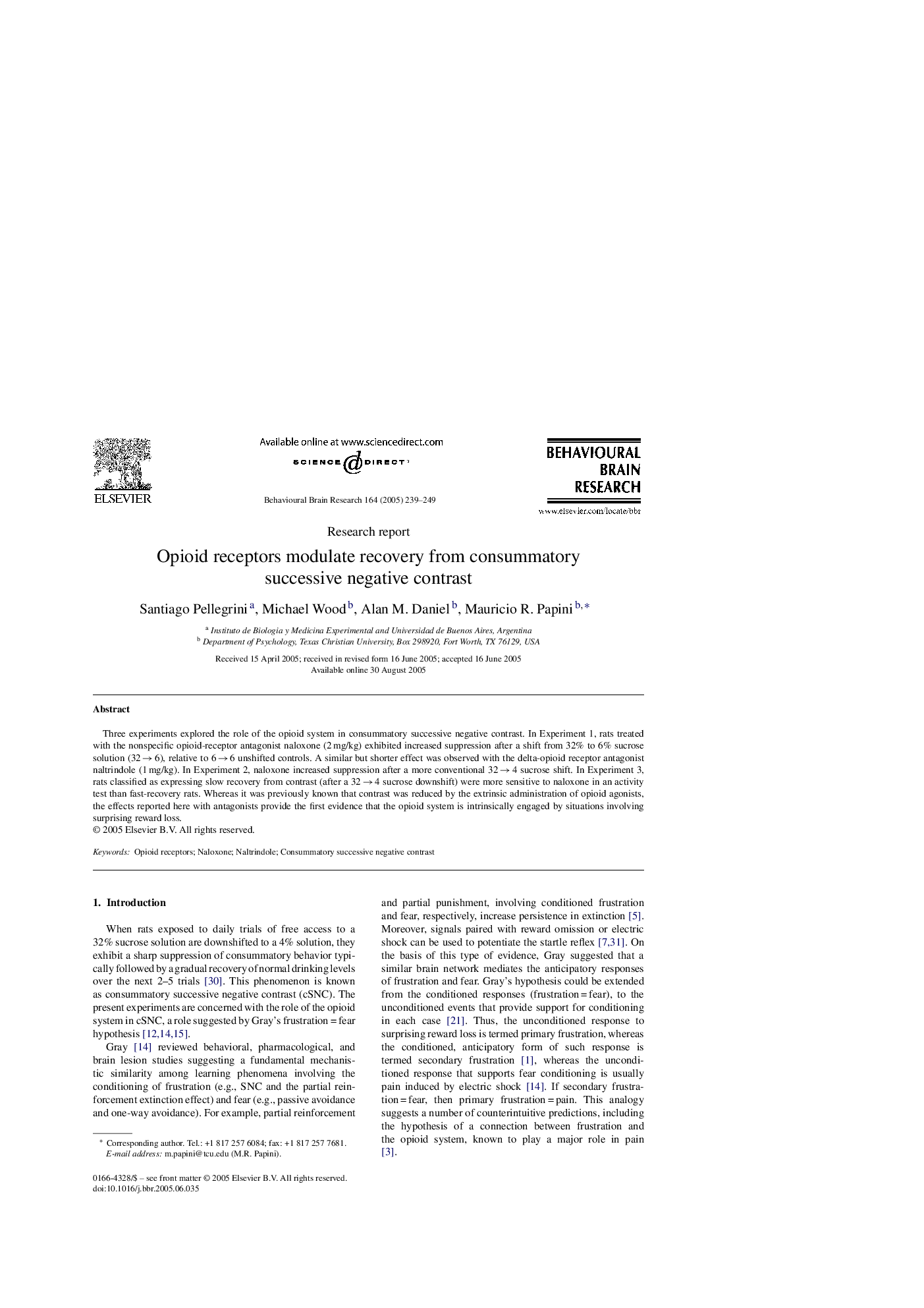| Article ID | Journal | Published Year | Pages | File Type |
|---|---|---|---|---|
| 9406380 | Behavioural Brain Research | 2005 | 11 Pages |
Abstract
Three experiments explored the role of the opioid system in consummatory successive negative contrast. In Experiment 1, rats treated with the nonspecific opioid-receptor antagonist naloxone (2 mg/kg) exhibited increased suppression after a shift from 32% to 6% sucrose solution (32 â 6), relative to 6 â 6 unshifted controls. A similar but shorter effect was observed with the delta-opioid receptor antagonist naltrindole (1 mg/kg). In Experiment 2, naloxone increased suppression after a more conventional 32 â 4 sucrose shift. In Experiment 3, rats classified as expressing slow recovery from contrast (after a 32 â 4 sucrose downshift) were more sensitive to naloxone in an activity test than fast-recovery rats. Whereas it was previously known that contrast was reduced by the extrinsic administration of opioid agonists, the effects reported here with antagonists provide the first evidence that the opioid system is intrinsically engaged by situations involving surprising reward loss.
Related Topics
Life Sciences
Neuroscience
Behavioral Neuroscience
Authors
Santiago Pellegrini, Michael Wood, Alan M. Daniel, Mauricio R. Papini,
